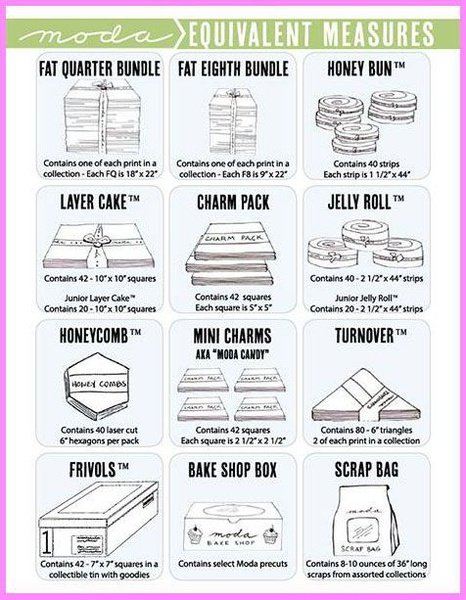
A paper butterfly craft is simple and quick. It will delight your child. There are many designs you could create. You can even make a Spring-themed butterfly. These are some ideas to help you get started. Make your butterflies as spring-themed as possible! There are many ways to make butterflies for different occasions. There are three simple methods to create a butterfly.
Simple
Start by printing the template onto thicker paper to create a simple paper butterfly. Fold it in half following the fold line. The wings should be folded in half. Next, trim the center of the butterfly shape. Next, use a drop of glue to paint one side. After it has dried, glue one side of the butterfly onto the body base. Then, glue the antennae and wings. Let dry the paper butterflies.

Quick
To make this simple craft, you will need four different colored craft papers. You can also make this craft with colorful cardstock, beautiful gift wrap, and origami papers. Trace and cut out small hearts or strips of paper. Fold each piece in half along the lengthwise. Make sure the edges are parallel. Next, glue the heart antennae and wing patterns to the body base. You can now hang your butterfly once the wings are dried.
Easy
Make a simple paper butterfly craft for your child. First, cut 8 pieces of tissue. You can use different sizes of hearts. Next, fold each square in half and then unfold it accordion-style. Fold each strip in half again and cut the remaining squares into wings. Glue the antennae for the heart to the base of the body. Repeat this process for the remaining sides of the body. Once the edges have dried, you can shape them and glue them onto the base of your body.
Spring-themed
For spring celebrations, create a paper butterflies garland. Card stock paper, various colored craft papers, pencils, scissors, glue markers, string and the template for the butterfly will be needed. To create a paper butterfly wreath, you can print the template and trace it onto paper. Hang the finished butterfly garland from a window, or on a doorknob. This charming, colorful, spring-themed paper butterfly garland is a great addition to any party.
Dainty
The cute little creatures have been a part of nature's ecosystem for thousands of years. A paper butterfly can be used to decorate classrooms or add an element of nature to arts and crafts sessions. These adorable creatures are easy to make and can be made using templates and a little bit of paper folding. This butterfly is a wonderful craft to use in nature-themed arts, crafts, and science lessons on seasonal wildlife. These butterflies can be used to decorate a classroom window or doorway, or as a mini-beast display panel.

Chic
These are the steps you need to make a chic paper butterfly. Each piece should now be cut in half lengthwise. Put glue along the bottom edges of the largest caterpillar's body and antennas. Place glue along the bottom edge of the largest butterfly's body and antennas. Next, attach craft glue to the heads and antennas of smaller butterflies. Use your finger to carefully peel off the mat. You are now ready to assemble the butterfly. It is best not to rush through the process, as it can be tricky and intricate to place the pieces correctly.
FAQ
What are some hobbies that you like?
Hobby Ideas For People Who Love to Teach and Learn.
Hobbies can be a great way to have fun and learn something new.
There are many hobbies. But they all share similar characteristics. They're often fun and easy to do.
These include working with others to teach someone how to use an instrument or build an airplane.
While you may not see yourself as a teacher at first, chances are that there is something you could do for someone else.
So if you want to be more creative in your life, consider starting a hobby where you can use your skills to help others.
What are collection hobbies?
The most loved collections include books, movies and music.
You can also find stamps, coins, cars and dolls as well model kits and figurines.
I think you get the idea.
Where can I find free resources to learn more about hobbies?
Many websites are dedicated to helping people find new hobbies.
Here are some of our favorite:
www.trythisathome.com - This site provides a list of over 100 different hobbies. It also offers information on how each one can be started.
www.hobbyfinders.org -- This site provides a searchable database of thousands upon thousands of hobbies that you can browse by skill level, location and interest.
www.indiebazaar.co.uk - IndieBazaar is an online marketplace designed specifically for independent artists and musicians. This site offers hundreds of products, ranging from artwork and music gear.
www.pinterest.com/explore/hobbies - Pinterest is a social media network that lets users "pin" images they find interesting onto their boards. Boards let users organize what they like into particular categories.
www.reddit.com /r/Hobbies - Reddit is another social media platform that lets users post links to articles, videos, or other types of content. Users can vote on the posts they consider most valuable.
What is a hobby for kids?
Any activity that kids enjoy as a hobby is something they do outside of the normal routine. Children might be drawn to, build, paint, create stories, play with toys or watch TV.
Parents worry that their children might get in trouble if they are allowed to do what they like. But this isn't always true. Your child will not get into trouble if he or she is safe and doesn’t cause any harm to other people or themselves.
It's important to remember that just because they like to do something doesn't mean that they'll always choose to do it. If they dislike writing but enjoy drawing pictures, they might opt to draw pictures.
There are many hobbies to choose from, so it's up you to find the one that interests you most.
How do you get started with your new hobby or interest?
First, decide what type or activity you want to pursue.
Passion is key once you have chosen your topic.
It is crucial to know why you want to pursue a hobby. It will provide you with direction and purpose.
Once you've chosen the hobby you would like to pursue you can start planning.
You should think about the equipment you'll need.
Consider whether classes or seminars are necessary.
Make sure that you have enough space in your home for your hobby.
It might also be worth considering joining a group or club. These groups are often supportive and offer advice.
Finally, think about how much money you would need to spend on your hobby.
What are some great hobbies?
Doing something you enjoy is the best hobby. If you enjoy what you do, it will be much easier to keep going. If you don't feel well or tired, you will always have an excuse!
There are many hobbies that we all enjoy: gardening, painting and crafts; photography; cooking; sports and games; reading music and film-making; collecting; cycling, walking, dancing and writing; playing instruments and other musical instruments.
Volunteering could be a great option.
You might be looking for something more adventurous. Take up skydiving or rock climbing, parasailing, parasailing and paragliding.
If you want to go further afield, there are plenty of unique ways to spend time in nature. These include caving.
What are some competitive hobbies?
Competitive sports include running, swimming, cycling, golfing, tennis, etc.
They're a great way to get social interaction and are enjoyed by those who love physical activity.
If your hobby involves physical activity, you will likely find other people who share it.
This could mean joining a club, or group that meets regularly to do sports together.
You may also want to play in a team game, where you are playing with others.
These include netball (soccer), football (cricket), netball (basketball), hockey, baseball, volleyball and badminton.
There are many kinds of competition.
Some competitions may be held for pure recreational purposes.
Others are intended to test competitors' skill.
And still, others are designed to reward outstanding performance.
In these cases, winners receive prizes.
Other competitions are meant to test competitors' strength and stamina.
These are called endurance events.
For example, marathon races, triathlons, Ironman Triathlon, etc.
Athletes train hard before they compete in these events.
To prepare their bodies and minds, they will have to adhere to a strict training plan.
They may need to spend some time out of their home for preparation.
It's important to remember that not all athletes compete in every type of event.
Statistics
- I am 100% biologically a woman (discover.hubpages.com)
- 37% Video Games 36% Travel 36% Health and Fitness (quizexpo.com)
- A new survey by Pew Research Center of teens ages 13 to 17 finds that 36% of girls feel tense or nervous about their day every day; 23% of boys say the same. (pewresearch.org)
- Much of this decline reflects the fact that teens are less likely to work today than in the past; among employed teens, the amount of time spent working is not much different now than it was around 2005. (pewresearch.org)
- In comparison, men in the “no humor” condition were refused 84.6% of the time and were only accepted 15.4% of the time. (time.com)
External Links
How To
How to get started gardening
Gardening is one of the oldest forms of agriculture. It takes patience, persistence, determination, and perseverance. The first step to starting a garden is to pick a spot where you will grow food. This could be on a large piece of land or in your backyard. Next, pick the type of plants that you would like. Do you prefer flowers or vegetables? Some people are passionate about growing herbs, while others like raising livestock like rabbits. Before you decide which crops you will plant, consider the amount of space you have. If your climate is cold, you may decide to plant berries and fruits.
Once you have chosen what you will be planting, you must take some time to prepare your soil. Your plants' success or failure will depend on the soil they are placed in. A good soil has organic matter which helps to feed the roots of your plants. Organic matter includes organic matter such as leaves, twigs or grass clippings. Once you have prepared your soil, you need to add nutrients. The type of plant you intend to grow will dictate the amount of nutrients you need. You can calculate these values online with a fertilizer calculator. Many fertilizers are available, so make sure you know what you are buying.
Now, wait for your seeds to germinate after you have prepared your soil and added the necessary nutrients. The process typically takes 2 to 3 weeks depending on the weather conditions and temperature in your area. Once your seeds are sprouted, you must water them regularly. Watering your plants too little or too often can cause problems. Avoid overwatering your plants. Overwatering can lead to root rot and fungal diseases. Remember that plants need less water in the summer than they do in the winter. Some plants must be dried out after being watered. Tomatoes, for example, need to be kept moist but not too wet. Soggy soil is not a good choice for tomatoes. After flowers are finished, plants must go dormant. The time when plants stop producing new life and store energy for the next season is called dormancy. Dormancy means that the plant stops communicating with its roots about producing food. Throughout this period, the plant stores energy. If temperatures fall below freezing or the plants are not getting enough sunlight, they will die.
Urban areas can limit your choices for plants. Urban areas tend to contain concrete sidewalks, roads, buildings, and parking lots that block sunlight from reaching the ground. Concrete absorbs sunlight, which prevents the soil beneath from getting enough sun exposure. Many plants are unable to survive in urban areas due to the lack of sunlight. There are still plants that thrive in urban environments. Many trees, shrubs, and perennials can adapt to city living. Many annuals are also possible to grow indoors in containers. You can have fresh greenery all year round with container gardens.
Now you're ready to plant.